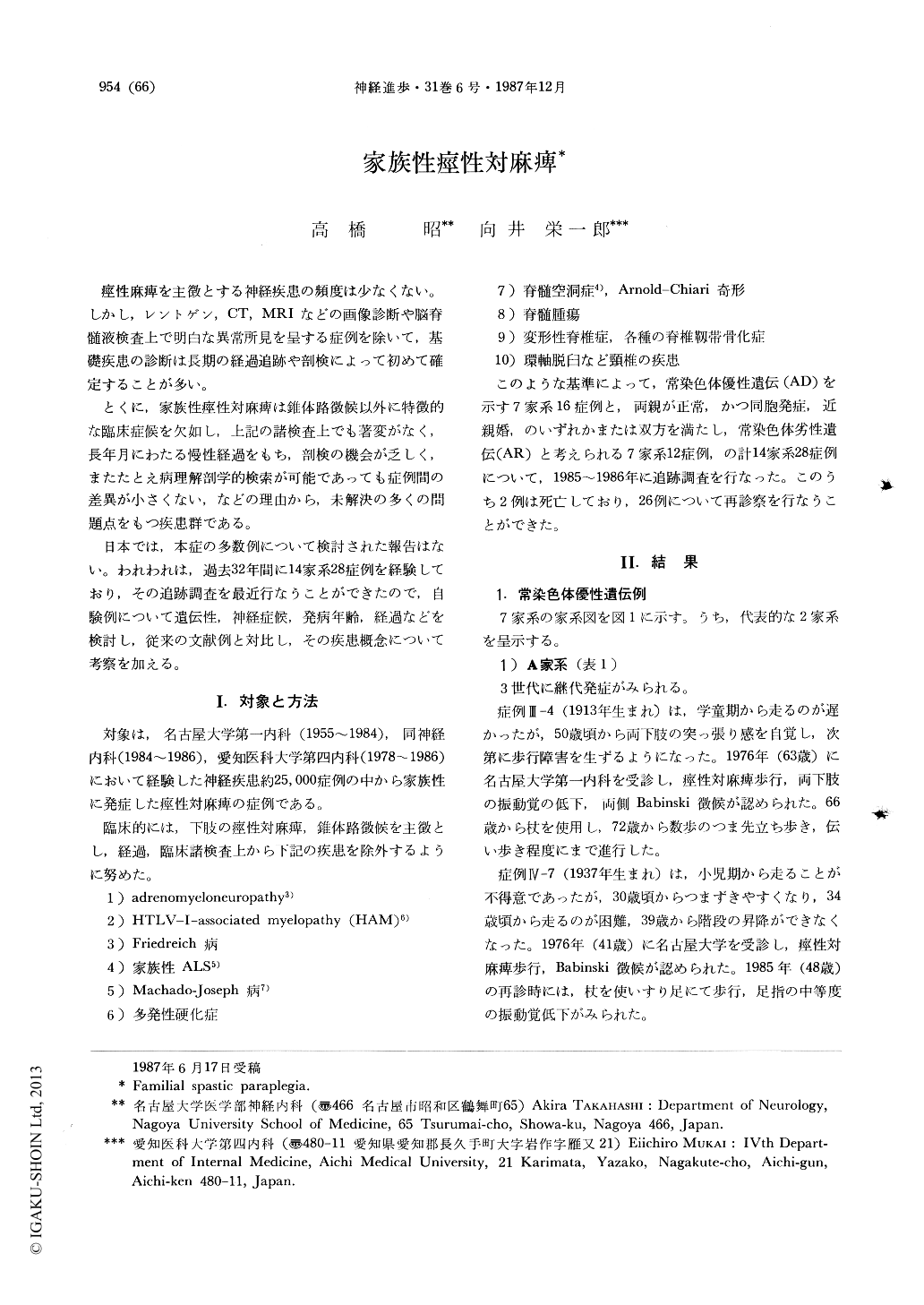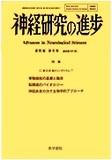Japanese
English
- 有料閲覧
- Abstract 文献概要
- 1ページ目 Look Inside
痙性麻痺を主徴とする神経疾患の頻度は少なくない。しかし,レントゲン,CT,MRIなどの画像診断や脳脊髄液検査上で明白な異常所見を呈する症例を除いて,基礎疾患の診断は長期の経過追跡や剖検によって初めて確定することが多い。
とくに,家族性痙性対麻痺は錐体路徴候以外に特徴的な臨床症候を欠如し,上記の諸検査上でも著変がなく,長年月にわたる慢性経過をもち,剖検の機会が乏しく,またたとえ病理解剖学的検索が可能であっても症例間の差異が小さくない,などの理由から,未解決の多くの問題点をもつ疾患群である。
Familial spastic paraplegia (ESP) is a rare hereditary disorder, characterized by slowly developing weakness and spasticity affecting predominantly the lower limbs with increased deep reflexes and Babinski signs. Contributions by Strümpell and Lorrain in 1880 have led writers to designate this disease by their names, although Charcot (1876), Seeligmüller (1876) and Erb (1877) had reported similar cases. The nosology of FSP, however, remains a matter of dispute, because of diverse genetic trait, lack of detailed pathological knowledge and difficulties in clinicopathological correlations, and so forth. No large-scale personal survey of patients with a carefully defined clinical syndrome has never been reported in Japan.
We investigated 28 patients belonging to 14 families in Nagoya University Hospital (1955-1986) and Aichi Medical University Hospital (1978-1986). In 1985-1986, we performed re-examination on 26 patients. The remaining 2 cases were dead at that time. The present paper described the results of the long-term follow-up study on 26 patients with FSP.

Copyright © 1987, Igaku-Shoin Ltd. All rights reserved.


